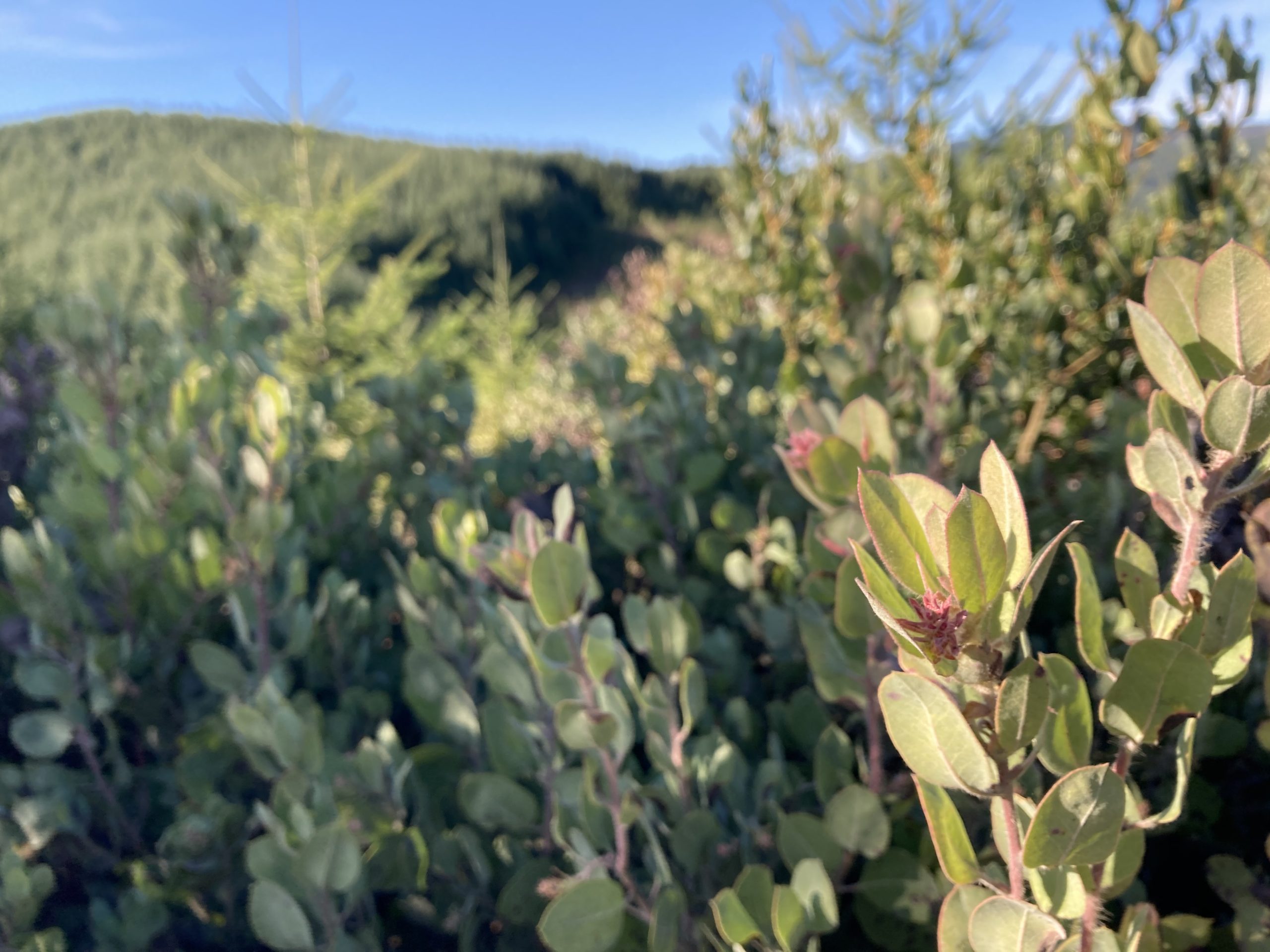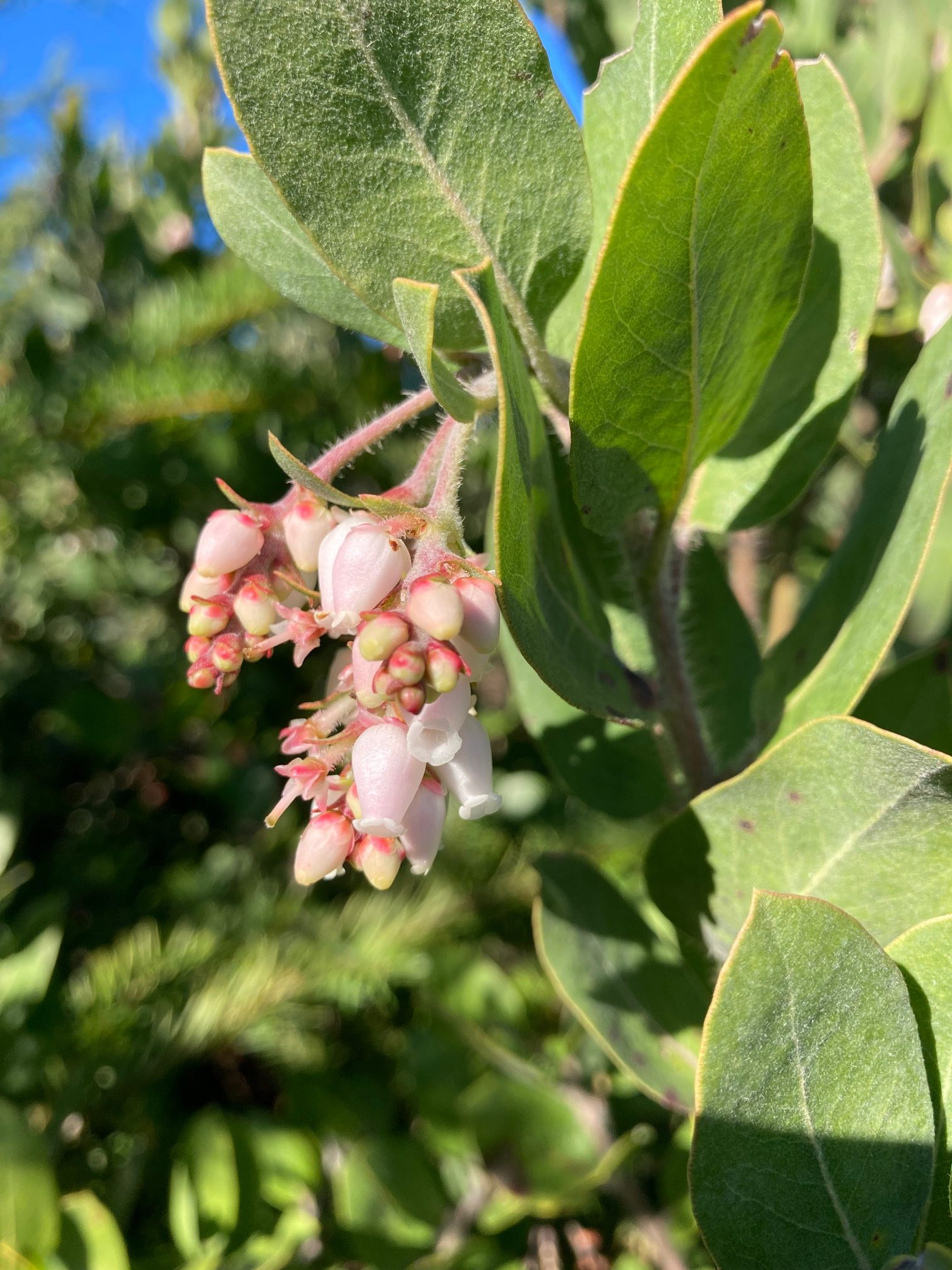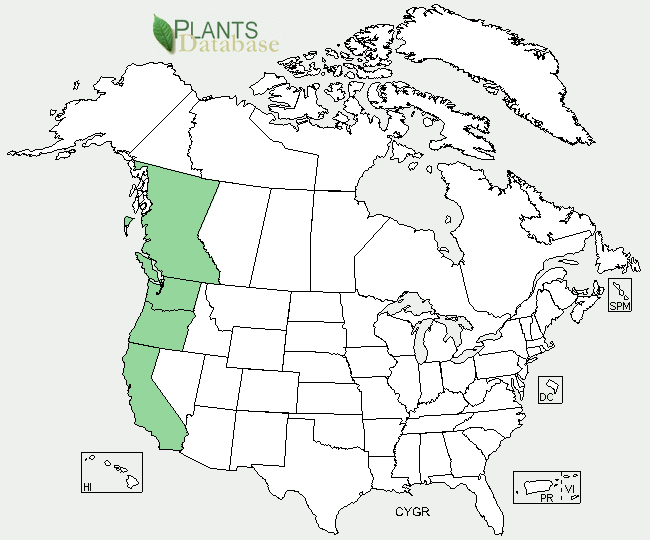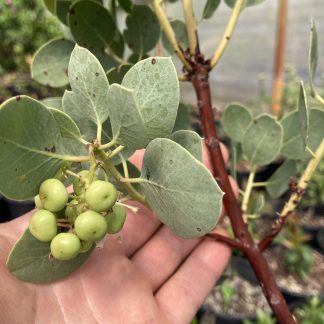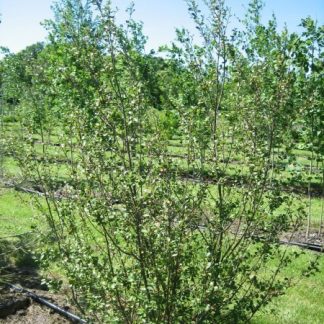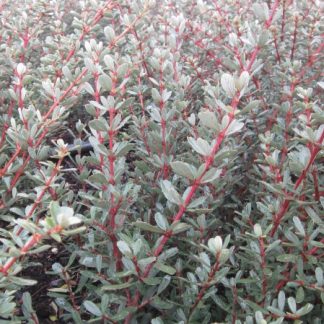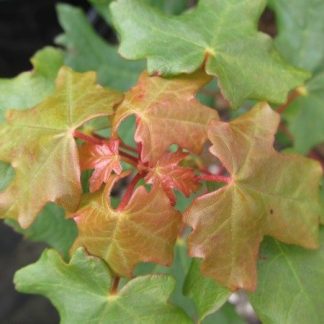Arctostaphylos columbiana
hairy manzanita
Habit: a tall shrub with an intricate branch structure and distinct hairy foliage. The young twigs of Arctostaphylos columbiana are grey and densely covered with bristly hair, turning cinnamon red and smooth with age. Its leathery blue to pale green leaves are elliptical to oval growing 1-2 inches, and the margins are entire. Leaves are alternately attached to stems with short, hairy petioles (short stalks). In late April to May, compact clusters of urn-shaped flowers bloom, decorating the shrub’s foliage with delicate light pink or white ornaments. Blossoms are followed by small, round, red to dark brown fruits, which are aggregated in drupelets and resemble miniature shiny apples.
Ecology: grows from the Pacific Coast to the west side of the Cascades, in open and rocky steep slopes from northern California to British Columbia; especially common in southwest Oregon. Hairy manzanita often establishes as an early successional species in disturbed ecosystems.
Growing conditions: enjoys well-drained, gravelly or rocky soils and partially vegetated sand dunes. This plant is sun-loving and does not tolerate shady environments. It prefers acidic soil and is extremely drought tolerant.
The shiny color and curvy branches of hairy manzanita add interest to a dull winter either in the wild or in a home garden. Interior designers have also taken advantage of the exquisite branching patterns of manzanitas, to create innovative decoration and furniture out of harvested limbs.
The flowers of this species are often visited by hummingbirds, and its berrylike fruits are eaten by many animals. Yet, humans should avoid consuming the fruit, due to constipation concerns. The name manzanita, translated from Spanish, means “small apples”, referring to the appearance of the fruits within the genus.
Specs
Evergreen shrub
2-12 feet (0.6 to 3.6 m)
3-6 feet (0.9-1.8 m)
7 to 10

